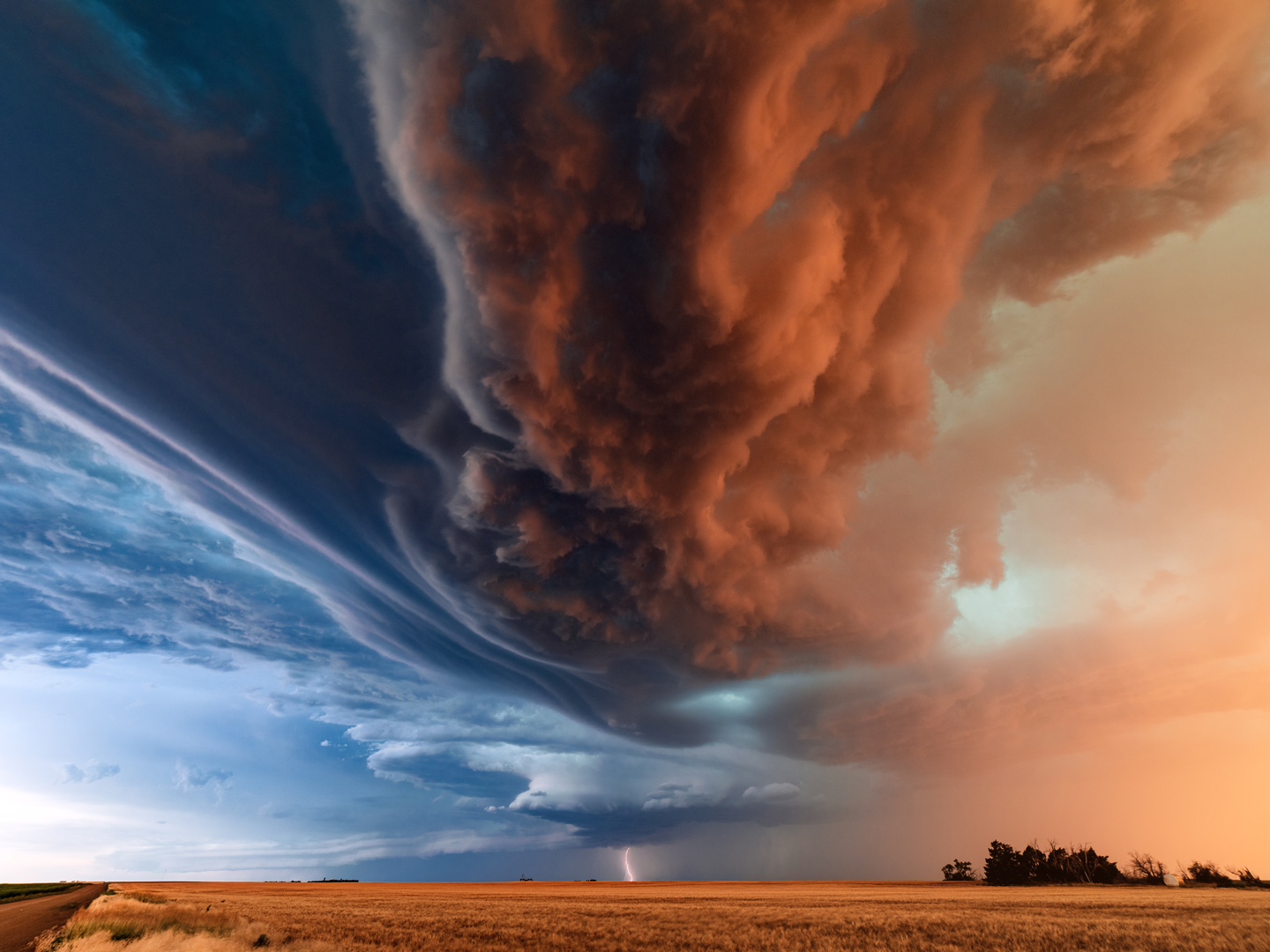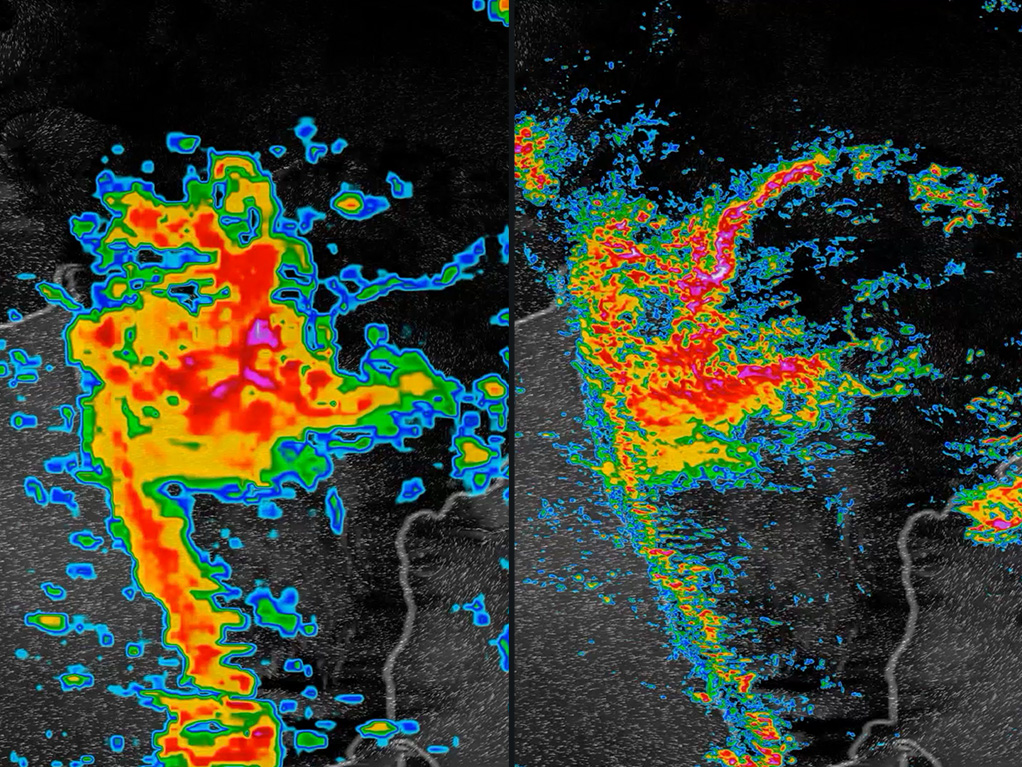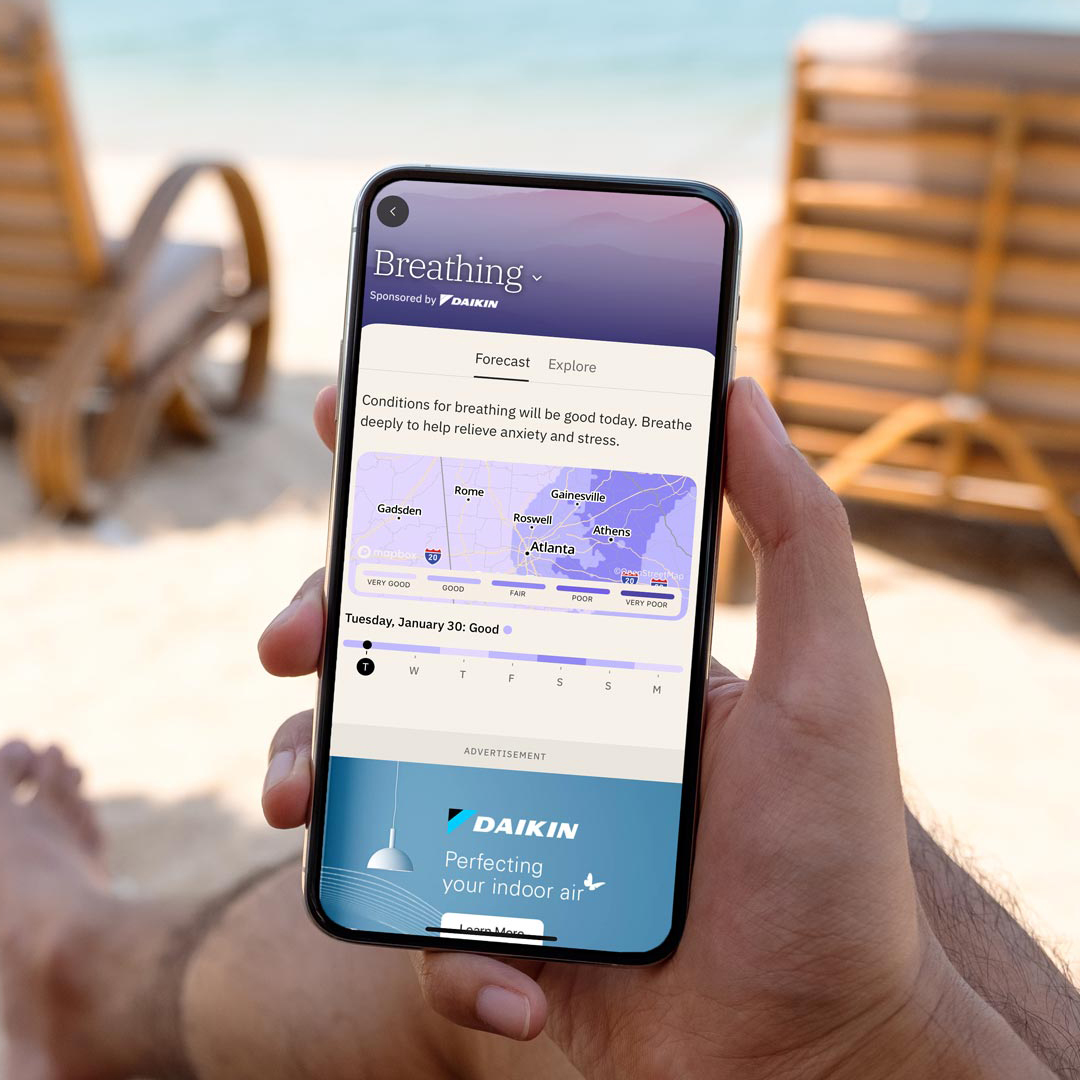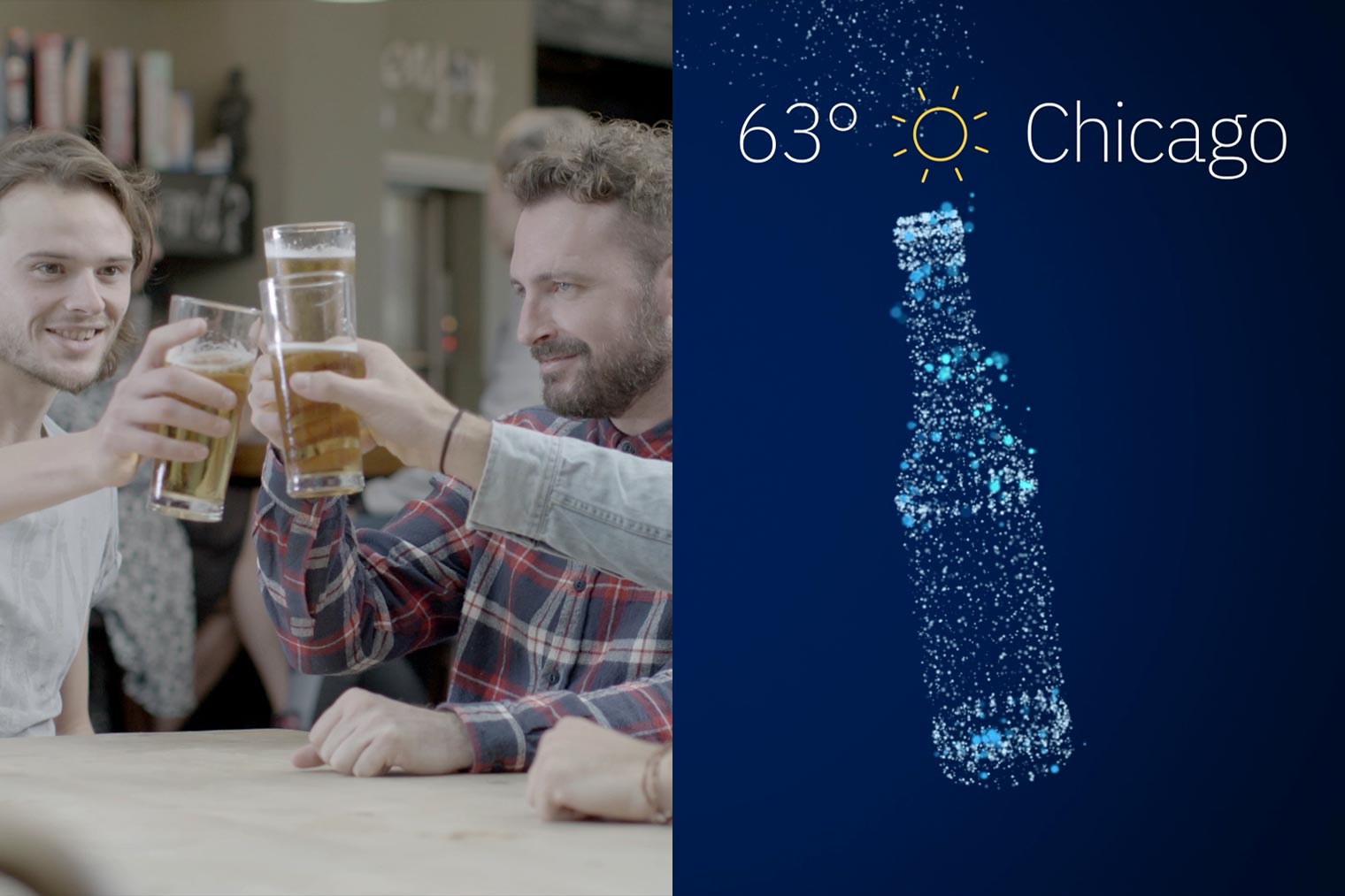Cannes 2024: Weather’s impact on the Croisette and beyond
Continue readingGarden variety or so called “pop-up” thunderstorms are common during the warm season and generally have limited impacts to airline operations. But there’s another kind of summer storm plaguing the airline industry that’s not so innocent: training thunderstorms. What exactly are these severe storms, what impact can they have on airline operations, and how can airline decision makers ensure they’re prepared? Read on.
What are training thunderstorms?
Training thunderstorms occur when a series of individual thunderstorm cells repeatedly propagate over the same geographical area. The overall collection of convective cells associated with training thunderstorms is also known as a Mesoscale Convective System (MCS). While the term “MCS” can apply broadly to any cluster of thunderstorms, a training MCS can result in a prolonged period of torrential rainfall, leading to significant flash flooding. These unique and rather rare convective systems are most common during the summer months across the central United States, occurring most frequently during the late evening and overnight hours.
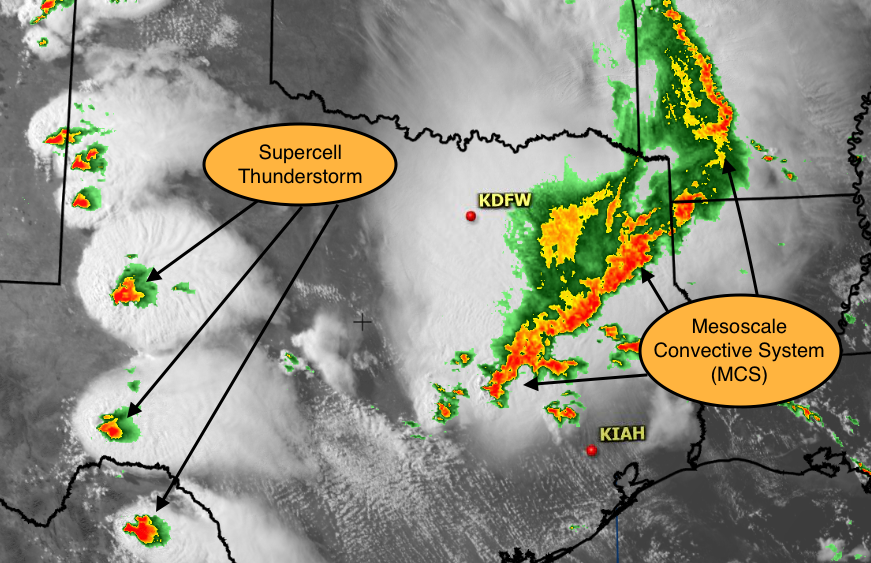
Thunderstorms erupting across Texas during a hot summer afternoon, causing numerous flight diversions.
Critical to the formation of training MCSs is the presence of a slow moving surface boundary. Commonly a warm front, this boundary is crucial in generating lift to initiate the development of thunderstorms. Once thunderstorms have become established, the slow movement of this boundary can enable several rounds of thunderstorms to traverse the same areas repeatedly.
Further enhancing the likelihood of training thunderstorms is the presence of a low level jet (LLJ). This strong belt of winds in the lower atmosphere aids in transporting the large quantities of atmospheric moisture needed to sustain multiple rounds of thunderstorms.
Forecasting training thunderstorms
While certain large-scale atmospheric features can be forecasted with a relatively high degree of accuracy up to several days in advance, finer-scale atmospheric phenomena such as training thunderstorms are much more difficult to predict. In these more nuanced situations, our team of The Weather Company meteorologists leverage a suite of short-term, high-resolution forecast models to better assess atmospheric conditions. Supplementing this model data is our extensive experience forecasting past thunderstorm events, with pattern recognition serving as an invaluable tool in the accurate and timely prediction of disruptive thunderstorm events.
How training thunderstorms disrupt airline operations
As thunderstorms redevelop and repeatedly rumble overhead or in close proximity to an airline’s hub during peak arrival or departure times, the risk of significant operational disruption increases:
- Training thunderstorms over arrival fixes or the airport can lead to airborne holding and possible aircraft diversions when fuel gets low.
- Blocked departure corridors can lead to long delays on the ground as planes become stacked up nose to tail on taxiways while waiting to depart.
- Lightning over the airfield can trigger ramp closures for ground workers which can lead to suspension of aircraft boarding, deplaning, catering operations, baggage transport, and fueling.
All this leads to departure delays and possible gridlock as arriving flights wait for gates occupied by delayed departures. As diversions and delays compound, the risk of cancellations increases. Passengers are left stranded at the airport with little to do but post unfavorable comments on social media followed by negative headlines in the press. Local roadway flooding is also possible which may make getting to and from the airport challenging for passengers and employees. An airline caught by surprise may take days to recover in the aftermath of the worst events.
How The Weather Company helps airlines navigate training thunderstorms
The Weather Company meteorologists embedded within an airlines’ operations center strive to identify and communicate the risk of training thunderstorm events up to a day in advance. The goal is to give the airline ample lead time to develop an operational plan to best manage the event based on the potential start time and duration. A thunderstorm planning outlook is issued the day prior to open a dialogue with airlines’ decision makers. Subsequent forecast updates and tactical communication continue throughout the event until the risk has extinguished.
Summary
Although we as The Weather Company forecasters can’t control the weather, we do work diligently to alert airline decision makers to the potential of a training thunderstorm event. We work side-by-side with them throughout the event to provide the most accurate weather and help the airline weather the storm.
Let’s talk
To learn more about our advanced aviation weather solutions, contact our aviation experts today.
Contact usEditor’s note: In March 2024, we conducted a Severe Weather Consumer Behavior Survey of The Weather Channel app users. Here are our data-rich findings and valuable insights for marketers.
Hurricane season is right around the corner and the forecast calls for one of the most active on record, with almost double the amount of named storms. It’s hard to ignore the increasing severity and volatility of weather. In fact, 63% of people surveyed believe weather is becoming more severe or unpredictable. And while more devastation is likely to come, a staggering 9 out of 10 of respondents have already personally felt the effects of severe weather in the past two years.
So, how do we prepare for, or–more importantly–recover from, the seemingly inevitable impact of extreme weather events?
We don’t have to go it alone and–the good news for marketers–consumers don’t want to. People turn to brands, products, and services they trust the most ahead of, during, and after severe weather events. Which gives marketers across retail, CPG, energy, health, insurance, travel, and more, an invitation to show up with empathy, authenticity, and support when it matters most.
The far-reaching effects of severe weather
The impact of severe weather is sweeping, significantly touching many aspects of people’s lives. Where does your brand see itself in this picture?
Physical surroundings
Starting with perhaps the most obvious impact, severe weather can wreak havoc on the physical things in our lives. In fact, 80% of people report facing physical challenges of some kind when it comes to severe weather, notably the safety of their home, loss of gas or heat, and diminished air quality.
Mental health
The toll on mental health due to severe weather is also very real. The fear of being in harm’s way, experiencing property damage, or having a disruption in plans or routines can be incredibly stressful, with 40% of those surveyed reporting heightened anxiety. This increased stress affects all generations, especially younger ones.
Decision-making
Severe weather influences obvious things like travel plans. But it can also come into play when choosing a vehicle to drive or exploring home energy options. The data speaks for itself–84% of people admit weather plays a role in their decision-making process. Particularly striking is the number considering relocation due to severe weather events: 1 in 4 have considered, or would consider, moving because of severe weather events.
Preparing for severe weather
We have entered an era where severe weather can happen pretty much anytime and anywhere. We don’t have to look too far in the rear view to recall the raging Canadian wildfires, uncharacteristic twisters in the upper midwest, and Los Angeles blizzard warnings. Our respondents also reported an increase in both the number of severe weather events and unusual activity for their location/season. This means seasonal preparedness is an always-on activity, with consumers seeking trusted guidance and solutions year round.
Staying informed
As a result, checking the weather has become second nature: 99% check the weather more often when severe weather is forecasted, up 18% since 2021. For most, it’s to ensure safety for themselves, friends and family, while others are simply interested in the science of severe weather phenomena.
When it comes to critical safety and preparedness information, people rely on weather websites and apps above all other media sources, including government alerts:
- 88% rely on weather websites or apps the most, vs other media sources (#1 response).
- The Weather Channel is the leading weather provider, with 90% of respondents indicating they rely on the Weather Channel for accurate severe weather information (#1 response).
Stocking up and charging up
We’ve all been there, faced with rapidly emptying shelves of supplies and essentials as severe weather approaches. Meanwhile, the ultra-prepared plan ahead with fully-stocked emergency kits of non-perishables, flashlights, batteries, and first aid. Whether proactive or reactive, the most common preparation behaviors reported range from stocking up on supplies like groceries, medication, and air purifiers; preparing back-up energy sources; and securing a home, yard, or car.
Brands can authentically help customers weather the storm
It’s a sensitive topic, for sure. Brands may feel uncertain about how to engage when people are in some of their most anxiety-filled, vulnerable moments. When actually, they’re expected to intervene and provide assistance, whether it’s offering preparedness tips or essential supplies like medication, power and groceries. Not to mention, 94% also expect brands to step up to help communities affected by severe weather events.
TruFuel’s full-funnel lift and engagement
TruFuel, a maker of pre-packaged precision-engineered, outdoor equipment fuel harnessed the power of a weather-driven strategy in 2023. Tapping into their authentic desire to help consumers be prepared for severe weather conditions and outcomes, TruFuel dynamically aligned messaging with real-time, local weather conditions.
Activated across The Weather Channel properties and digital ecosystem through Adform, this targeted, contextual messaging helped highlight the importance of keeping generators, chainsaws, snowblowers, and other equipment ready for when severe weather strikes. And, also resulted in benefits for the brand, including:
- 5% lift in aided awareness
- 7% lift in favorability and purchase intent
- 8% lift in familiarity
Secure your weather strategy
Brands can play a crucial role–and earn priceless brand trust in the process–by providing resources and support to address the physical, emotional, and lifestyle concerns caused by severe weather. With a portfolio of advertising solutions, we can help you deliver the right, empathetic message, in the right place, at the right time:
- Leverage Weather Targeting to integrate your preparedness message across the digital ecosystem
- Align your brand with seasonal and severe preparedness content on The Weather Channel to help consumers stay safe and informed
- Drive awareness with exclusive, native CTV content integration in the LG home screen when there is an active National Weather Service (NWS) alert in the viewers’ local area
Severe weather is a reality we can’t ignore. But with it comes the chance for brands to help consumers navigate this reality, with preparedness before, support during, and resilience after the storm. Will your brand be there when consumers need you most?
Let’s talk
What’s your weather strategy? To learn more about harnessing the power of weather to increase engagement and drive growth, contact our advertising experts today.
Contact usSince waiting for Google to deprecate the third-party cookie feels a bit like waiting for a watched pot of water to boil, visionary marketers are already capitalizing on the renaissance of contextual advertising to supercharge their strategies.
But let’s start with some… context.
Since 1994, third-party cookies have used basic technology to fuel just as basic personalization, but they lacked the dimension that allowed marketers to achieve precision and deep connection. As technology has advanced, consumers are increasingly wary of the overuse of data to make up for the limits of cookies:
- Almost half (46%) of consumers worldwide think promotions based on their activity within 2 minutes of visiting a website or app is “creepy,” according to a Marigold and Econsultancy survey.
- A poll of social media users by social justice organization Global Witness and YouGov found that 57% of people said, “I don’t want my personal data being used to target me with any ads, either commercial or political.”
Now, marketers are excited to re-focus their data strategies toward a more privacy-friendly and human-first approach.
One strategy that’s very much a part of that future ecosystem is the legacy solution of contextual targeting, given its ability to personalize relevant media messages without cookies. But to truly be innovative, we need to broaden the definition of contextual targeting’s capabilities and how effective it can be.
Contextual targeting in 2024 has the potential to be so much more visionary than activating media tied to simply a few words on a page. It’s emotional, it’s environmental, it’s personal–not to mention, it’s effective.
When contextual targeting is used to its full capacity, it supercharges smarter advertising decisions, influencing and reflecting media consumption according to a person’s physical environment and emotional state.
But how exactly can marketers use data to better connect to a person’s state of mind? And even more, how do they reach people in real-time when they are making those emotionally-driven decisions? Enter weather data.
Weather data is the ultimate contextual accelerant
Weather is a hyper-local signal that influences every aspect and decision—consciously or not—of people’s lives. It influences how we feel, what we do, where we go, and what we buy.
Advertisers have long used weather data to target specific products based on changing conditions. Think of a coffee brand switching beverage messages from warm to cold as the seasons change, or a cruise line showcasing images of warm locales in the depths of winter. Think of yourself lounging poolside with the sun shining based on the weather forecast–sounds nice, right?
While all great, effective, and somewhat obvious use cases, weather data presents a more nuanced and much deeper understanding of the consumer with a holistic, multilayered view that goes far beyond surface-level transactions. With The Weather Company’s Weather Targeting suite of signals, brands are tapping into a much more inspired set of data and use cases that are richer and more privacy-friendly cookie alternatives.
Here’s why:
- Contextual weather data enables rigorous privacy and ethical standards while still achieving scalable precision. The unique combination of proprietary and NVIDIA AI-based technologies along with deep expertise from over 100 meteorologists allow us to deliver the most accurate and trusted weather data. That combination is one of the reasons that ForecastWatch, the only globally recognized measure of forecast accuracy, named us The Most Accurate Forecaster1, 3 times more likely to deliver an accurate forecast than our closest competitor. In addition, our consumer brand, The Weather Channel, was named a Top 10 Most Trusted brand.2
- Weather data presents a more nuanced and deeper understanding of the consumer. That’s because weather information not only reaches people during specific conditions, but also when they’re in the right mindset; often when they are motivated to do something. Consider the national department store that recently tapped into weather signals to predict when consumers needed retail therapy (due to lousy weather), or when they were feeling optimistic and eager to spend (sunny, bright skies brightened the “outlook,” in more ways than one). That retailer saw a 26% incremental jump in foot traffic by tapping into those signals.
- Weather data can help drive timely demand. With a personalized message at the right time, precise weather insights motivate behavior and drive action–within seconds of the message being seen. For example, a travel bureau recently activated messaging to consumers in snowy climates with invitations to warm escapes, generating a 57% surge in time spent on the bureau’s site when those blustery conditions made them crave being anywhere else.
- Weather information can predict utility, ultimately increasing brand preference. TruFuel, a premixed fuel product that powers outdoor equipment, leveraged the connection between weather and power equipment to engage people ahead of severe weather in their area. Knowing that 54% of people look to brands for tips and solutions around electricity and/or portable power solutions during inclement weather, TruFuel activated contextually relevant creative. The intelligent creative aligned generator messaging with a person’s real-time weather conditions, resulting in a CTR 8 times higher and a 7% lift in purchase intent.
With the right signals, contextual targeting is evolving into a dynamic and lasting solution for performant media strategies. Brands, like the ones above, are able to achieve holistic relevance that drives action, all while respecting the privacy of their customers.
As the advertising industry nears the end of one era and the beginning of another, the call for strategic and innovative signals like weather data is at an all-time high, and the opportunity is ripe for marketers to be first movers in setting the tone.
Sunny skies ahead, indeed.
Let’s talk
What’s your weather strategy? To learn more about harnessing the power of weather to increase engagement and drive growth, contact our advertising experts today.
Contact us1 ForecastWatch, Global and Regional Weather Forecast Accuracy Overview, 2017-2022, commissioned by The Weather Company
2 According to a Morning Consult May 2023 survey: The Weather Channel brand was the #9 most trusted brand in the US. The surveys were conducted from 3/3/2023 through 4/3/2023, among a nationally representative sample of 799 to 8,434 U.S. adults.
What’s the latest frontier for the aviation industry? Space weather.
The scientific data available on how space weather impacts avionics is still in development; the industry is currently at a similar level of understanding as with terrestrial weather back in the 1970s.
That’s why The Weather Company’s Space Weather Task Force is dedicated to advancing this knowledge base. We work closely with the Space Weather Prediction Center (SWPC) to help aviation professionals navigate its immediate (and currently recognized) effects on airline operations such as communication blackouts caused by sunspots, GPS malfunctions created by geomagnetic storms, or solar radiation exposure to passengers and crew.
Recently, we hosted an exclusive webinar to share how our aviation weather experts handle communication on space weather and its current impacts. We also discuss how The Weather Company is continually innovating and improving these communications.
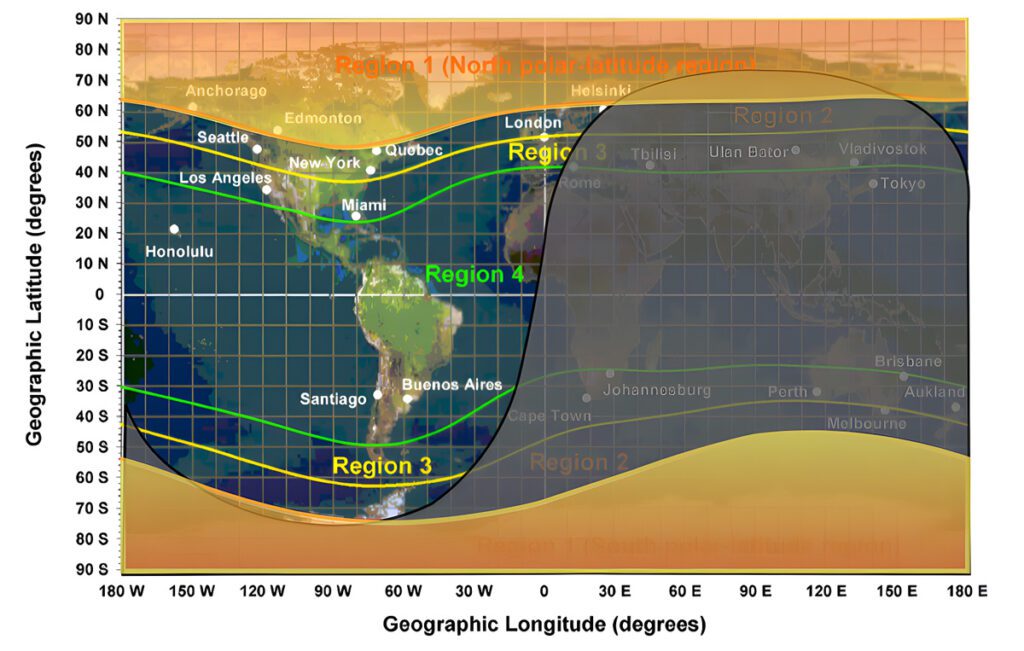

Check out the recording below to get more info about how we’re tackling space weather, one event at a time.
In this webinar, you’ll discover:
- A refresher on space weather’s impact
- The way we obtain space weather data from SWPC
- How we communicate space weather events to airlines
- Our plans for innovating in this field
- A helpful Q & A session with attendees
If your airline experiences any effect of space weather, let us know. Your input may help revolutionize the understanding of this phenomena – for your friends at The Weather Company, SWPC, and the world at large.
Ready to get insights? Watch the webinar now.
Let’s talk
To learn more about our advanced aviation weather solutions, contact our aviation experts today.
Contact usThis post is part one of a two-part blog series dedicated to severe thunderstorm and convection weather education. Read part 2 here.
Picture this: it’s late March. Grass is greener. Flowers are budding. The temperature is picking up. The weather is finally calming down, and you let out a sigh of relief.
Then it happens. Strong gusts of wind, bouts of hail, and even tornadoes. Looks like you’re not out of the woods yet.
That’s because spring isn’t just a time of renewal. It’s also the time when severe weather starts to show its true power. And for meteorologists, it’s the most exciting season to witness–especially because of severe thunderstorms.
What causes severe thunderstorms during spring in the US?
The answer has to do with the rise in temperatures as the northern hemisphere increases its angle to the sun. This causes longer daylight hours. But there are many more variables needed to create severe thunderstorms. These include:
- Available moisture
- An unstable atmosphere
- A lifting mechanism
- Wind shear
How these phenomena create severe thunderstorms
During the spring, the Polar Jet is still very active and is associated as a boundary with cold Canadian air on its northern side. This cold air mass comes down from Canada and interacts with the warm, moist air that moves northward from the Gulf of Mexico. This available moisture is crucial in the development of severe thunderstorms.
What’s more, the Great Central Plains provides an excellent backdrop, or “battle zone” if you will, for these two air masses. When spring arrives, the upper atmosphere is relatively cool–even cold. And the lower levels of the atmosphere get warmer thanks to the longer days.
This is the catalyst for the second ingredient in severe thunderstorm development: an unstable atmosphere. Meanwhile, the Polar Jet still dips down into the central US, creating strong mid- and upper-level disturbances in the atmosphere.
These disturbances support frontal zones and frontal waves which are located between the “battle zone” of two air masses located on or near the surface (in this case, the Great Plains.) And thus, we have our third ingredient for severe weather: a lifting mechanism.
So what about the last ingredient: wind shear?
Forms of wind shear
- Vertical wind shear: This type enhances the thunderstorm updrafts, allowing the storm to continue to get stronger and stronger.
- Lower-level directional wind shear: Thunderstorms need this kind of wind shear to occur in the lower levels of the atmosphere, which helps the updrafts to start rotating.
When all these ingredients are in play, convection happens. And weather forecasters feel the hype. They know severe springtime thunderstorms are coming up–and they’re in for quite a show.
Wrapping up
While this isn’t a comprehensive list of severe weather requirements, I hope I gave you a quick and easy resource to understand the basics of why spring is a likely time for severe weather thunderstorms.
So now, why not go outside and enjoy the possibilities spring has to offer? Just keep in mind that there are bigger forces that can bring you a pretty entertaining light show.
Want to know more about how The Weather Company helps the aviation industry operate amid thunderstorms? Check out part two of this blog post series.
Let’s talk
To learn more about our advanced aviation weather solutions, contact our aviation experts today.
Contact us




